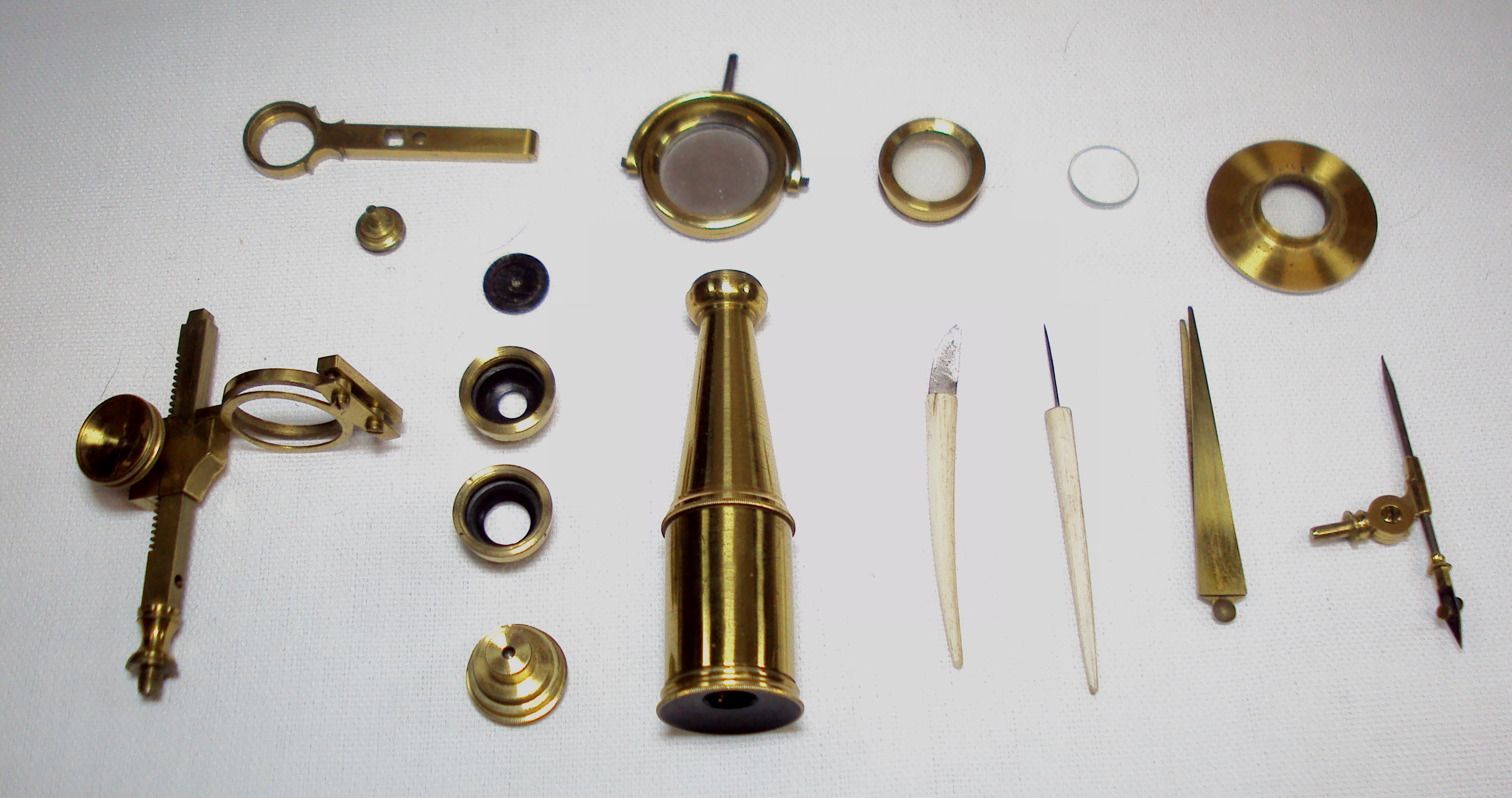Gould's Improved Pocket Compound Microscope
| DESCRIPTION | HISTORY |
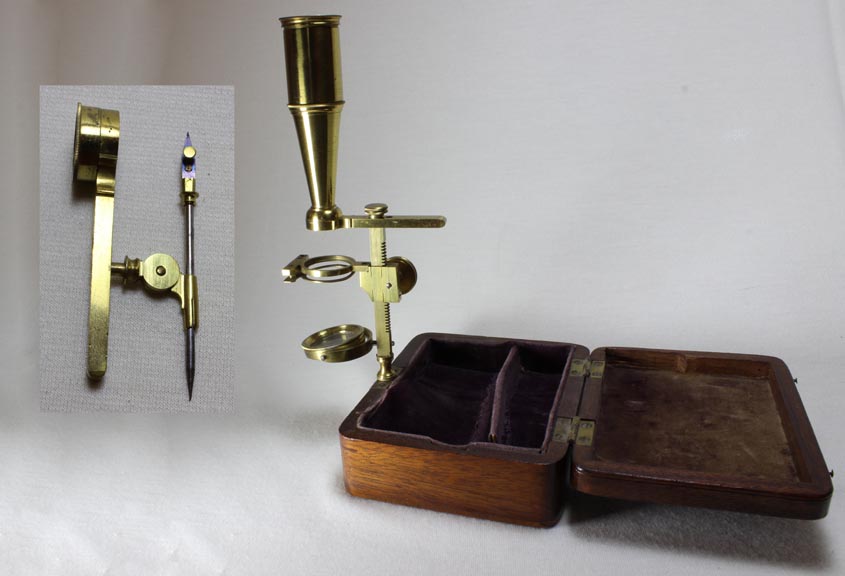
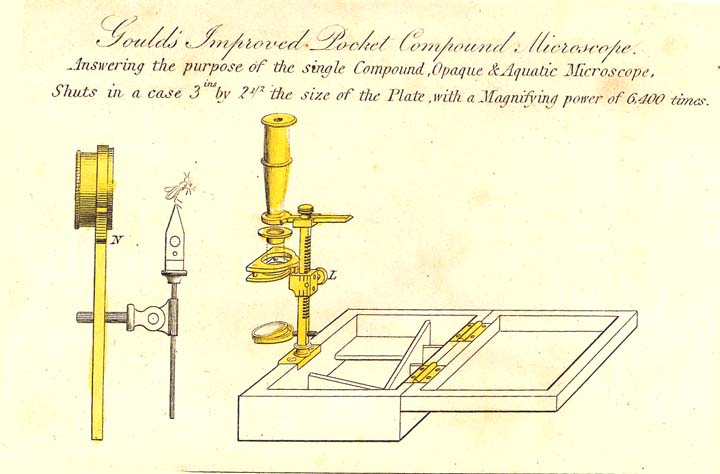

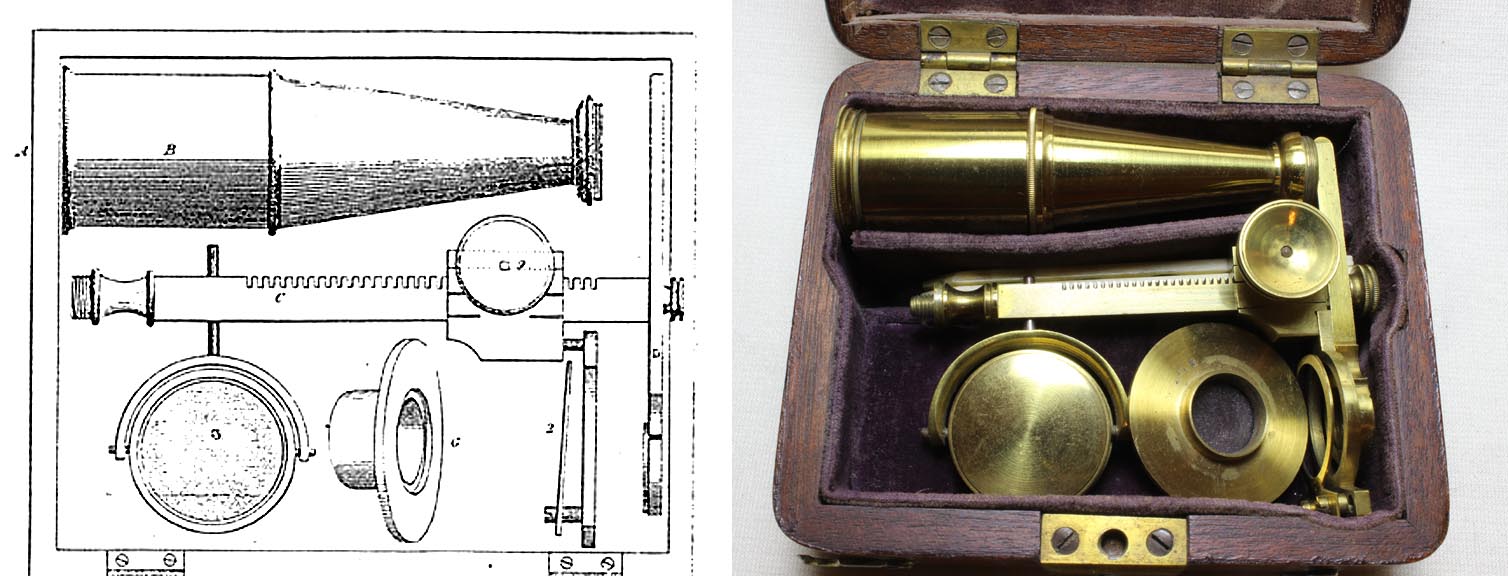
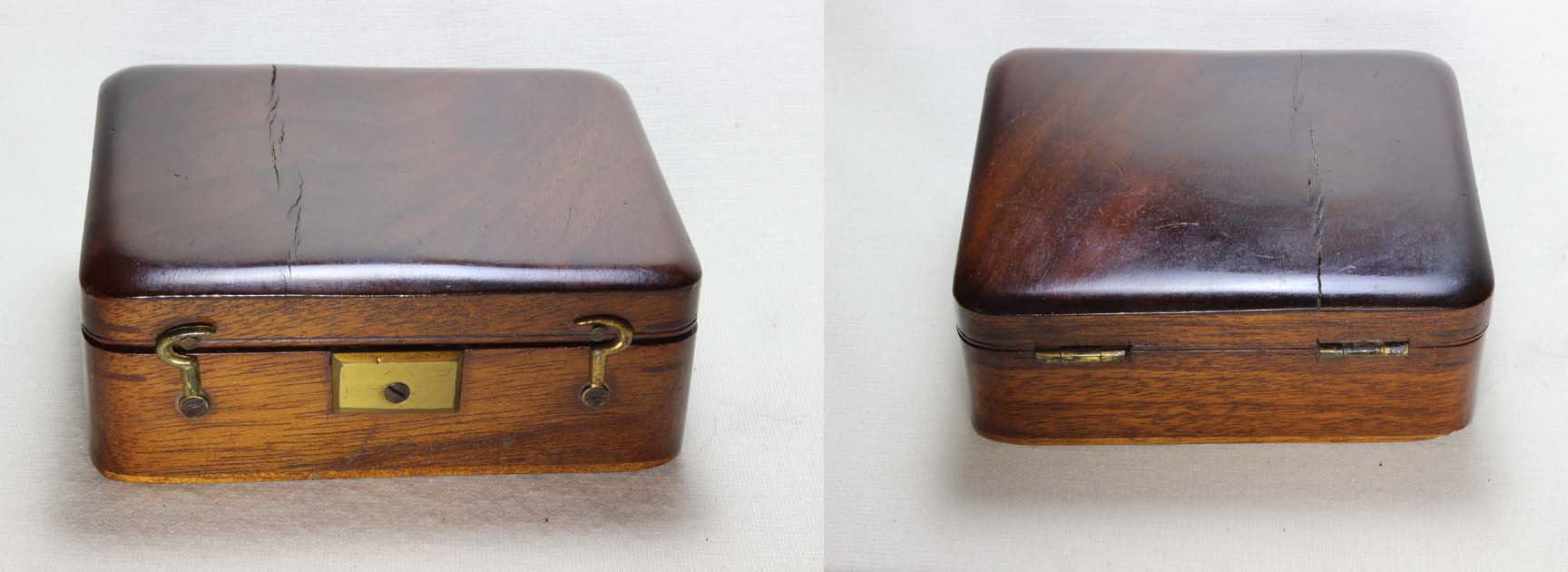
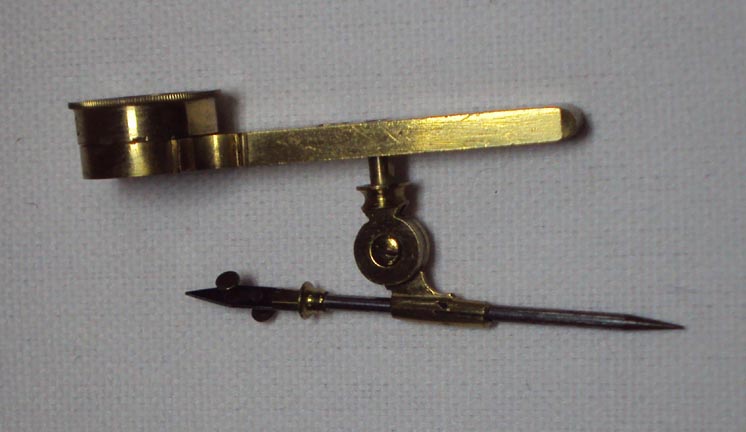 The instrument is nearly complete when compared to figures in Gould's booklet.
The case measures a mere 3 3/16 x 3 15/16 x 1 7/16 inches in thickness. The case is made of mahogany, and lined in a
dark purple velour with flaps serving to separate the layers. The arm can be used with the stage forceps and one of the
objectives as a hand held simple microscope.
The outfit includes:
The instrument is nearly complete when compared to figures in Gould's booklet.
The case measures a mere 3 3/16 x 3 15/16 x 1 7/16 inches in thickness. The case is made of mahogany, and lined in a
dark purple velour with flaps serving to separate the layers. The arm can be used with the stage forceps and one of the
objectives as a hand held simple microscope.
The outfit includes: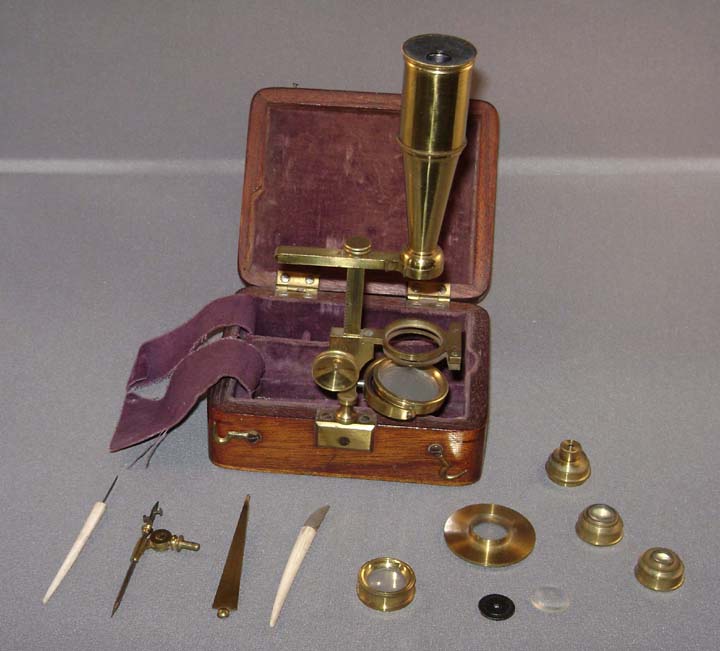
*some Gould Pocket microscopes have only one hole for accessories on the stage, others have two holes, one on either side.

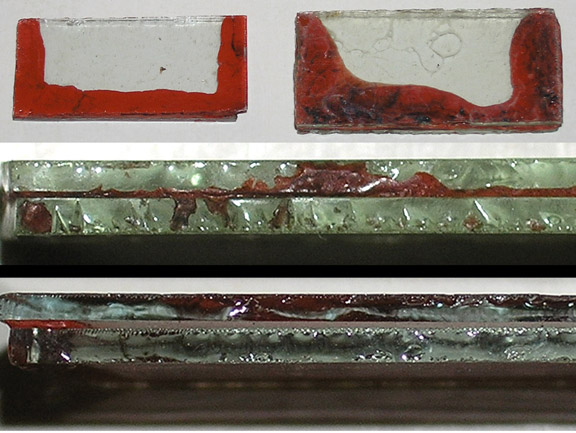
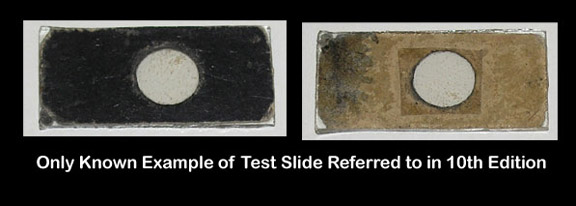 Note that missing from
this example are the Brush for 'obtaining mites' and the like, the Test Slide, and the
Note that missing from
this example are the Brush for 'obtaining mites' and the like, the Test Slide, and the Two pieces of Glass sealed together for holding a drop of waterwhich is identified as 'P' in the figure. Joe Zeligs was kind enough to provide images of examples of the water slide, and also what is likely the test slide. The known examples of the 'glass water slide' (trough)measure about 1.2-1.4 X 0.55-0.65 inches in length and width, being about 0.15 inches thick and with a gap between the slides of about 0.015 inches. These slides are very crudely cut and the application of the wax also quite crude. The edges of these slides are not polished. A few examples of this microscope are also known to have a tiny freestanding bullseye condenser accompanying it, also lacking from this example. The parts of this microscope, and its accessories, all disassembled, are shown laid out at the bottom of this page.
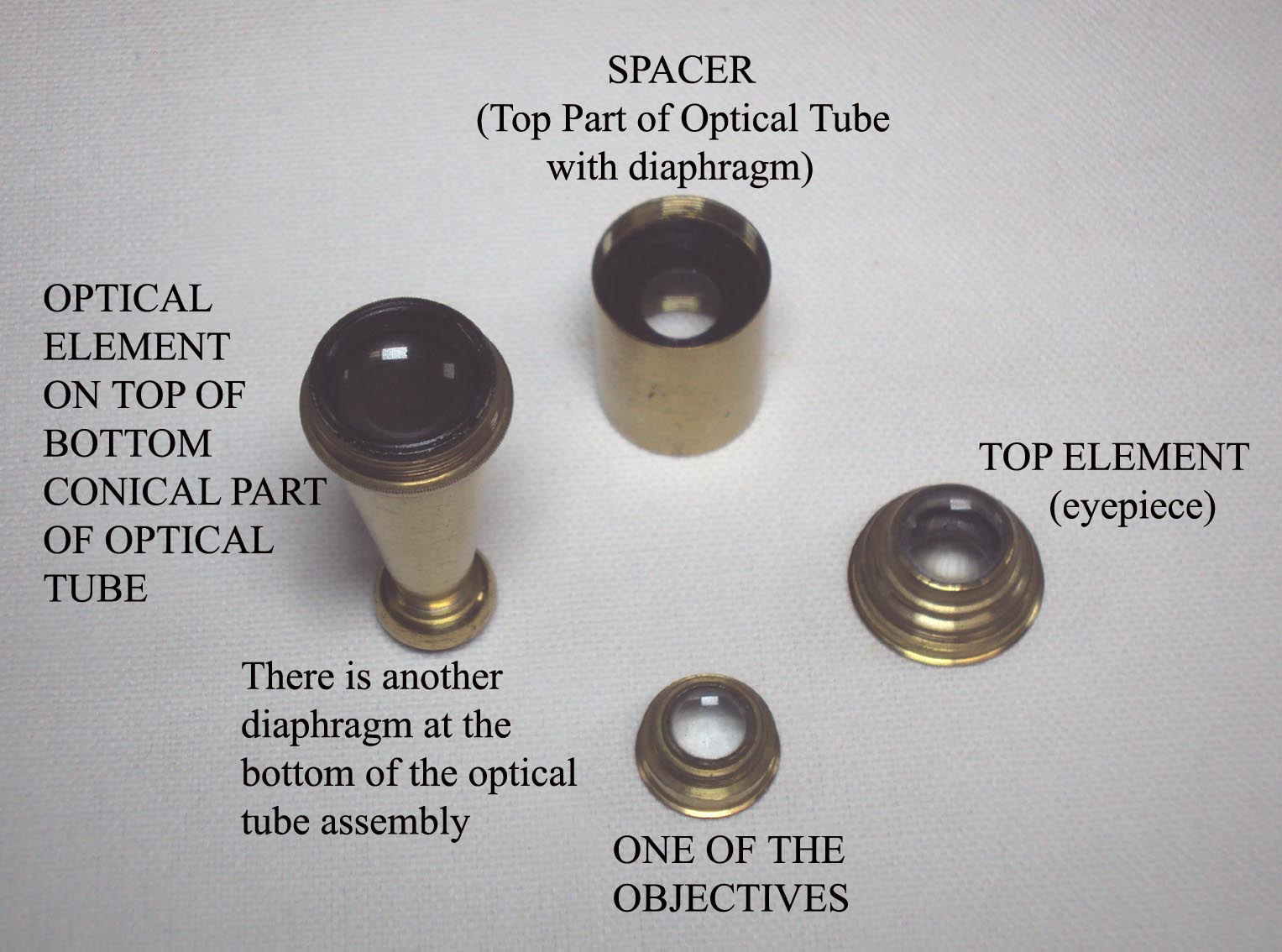 The optical elements include the top eyepiece, cylindrical spacer containing a diaphragm, the conical tube which has another optical
element at its top and a diaphragm at its bottom, and the objectives; all except the highest power objectives are in
brass cells which screw on, while the highest power is in a black-painted brass disk which drops into the arm ring, rather than screwing on. According to Gould, this last high power objective was to be used alone, not with the compound tube.
The optical elements include the top eyepiece, cylindrical spacer containing a diaphragm, the conical tube which has another optical
element at its top and a diaphragm at its bottom, and the objectives; all except the highest power objectives are in
brass cells which screw on, while the highest power is in a black-painted brass disk which drops into the arm ring, rather than screwing on. According to Gould, this last high power objective was to be used alone, not with the compound tube.
The Companion to the Microscope and a description of C. Gould's Improved (Compound) Pocket Microscope... London: Sold by W. Cary, 181 Strand.The title continued, and changed over the years as can be seen in the table listing many of the different editions. Although the title was as noted, the figure in the booklet often described it:
Answering the purpose of the single, Compound, Opaque, & Aquatic Microscope.This type and size of microscope was first developed sometime in the 1820's and the first edition of Gould's booklet was said to be published no later than in 1826(as reported in the Mechanics' Register for that year), yet by 1829 it was in its
sixth edition. Both the fifth and sixth editions were published in 1829. Click here to see an enlarged image from Gould's 1835 Booklet. The earlier complete 1829 sixth edition may be found here on the Microscopist.net website. Note the change in the title with the later 1835 tenth edition to include the
compound, oxy-hydrogen and solarmicroscopes, although most of the information and all of the engravings reflect the use of the original 'Improved Compound Pocket Microscope.' Indeed the title frequently changed with each subsequent edition as can be seen in the page devoted to Gould's books; this page also addresses the evolution of this little instrument and especially its included accessories, over twenty five years or more.
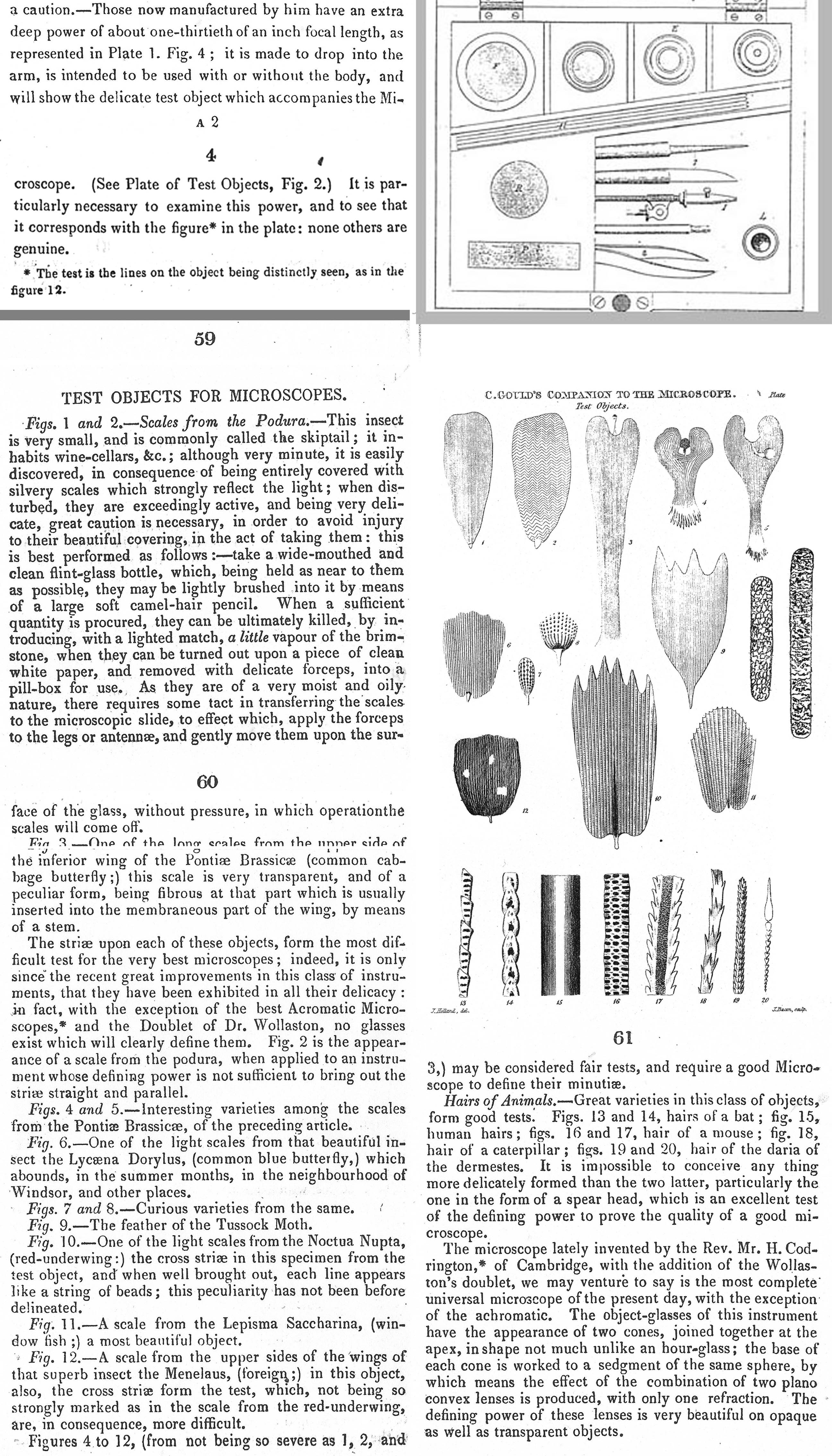
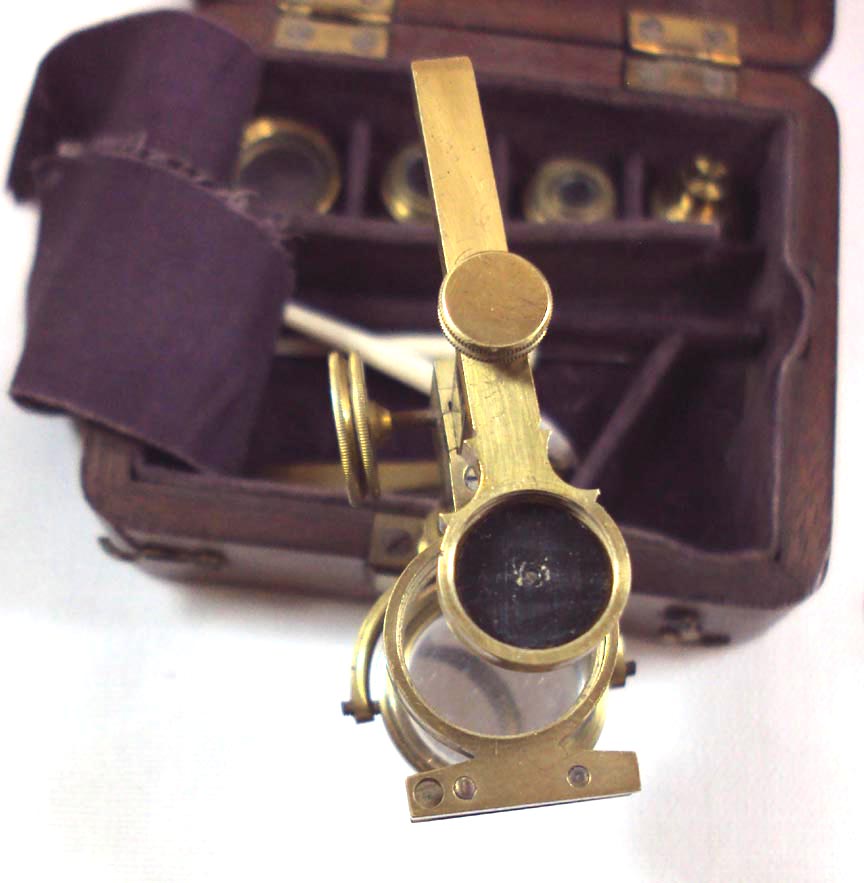
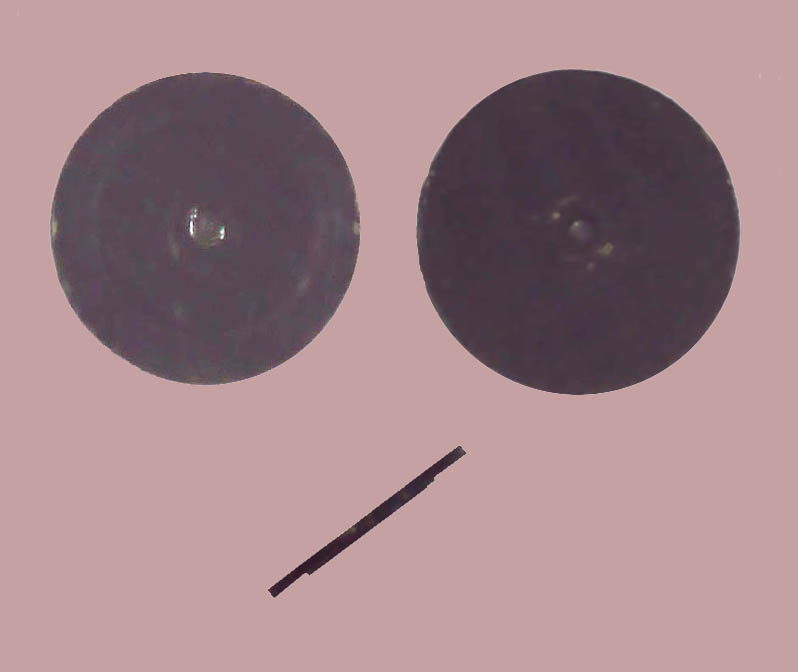 Gould soon claimed many makers were producing a similar, but inferior copy of his invention, and supplying with it
a copy of Gould's Booklet. He felt that by supplying a copy of his booklet with these copied microscopes the purchaser
was misled into believing it was a Cary-made Gould microscope that accompanied the booklet.
On pages 3 to 4, in the 1835 tenth edition of his booklet, he stated that the authenticity
of a Cary-Gould microscope could be confirmed by examining test objects with a recently supplied high power lens in a
black disc (seen in place on the instrument, as pictured to the left, and alone, below that). This disc is shown starting no later than the 1832 edition, and was not pictured in the 1829 editions. Apparently Gould believed the imitators could not produce such a fine high power lens.
Even though this example is unsigned, it contains the high power disc in the case. In a side by
side comparison, you will note that the figure from his 1829 sixth edition does not picture this new accessory,
but it is seen in the figure from the 1832 eighth edition, and also 1835 tenth edition, and is labelled as number 4. This little lens included with the microscope described here, is not commonly seen and this may be
more because, being so small and black in color, it is easy to lose, rather than the fact that it was not supplied with
the microscope in question. It indeed does have a very short focal length, and my example does produce a good image.
It can be used alone or even
with the compound body, but focusing with only the coarse focus supplied is very difficult, and moving the specimen is even
more problematic to say the least! This would have been easier with the version of the Cary-Gould instrument which
had a both a mechanical stage and a fine focus, also seen on this site. For more on the
Gould Test Objects, including his engraving of all the test objects he suggested, please click
here.
Gould soon claimed many makers were producing a similar, but inferior copy of his invention, and supplying with it
a copy of Gould's Booklet. He felt that by supplying a copy of his booklet with these copied microscopes the purchaser
was misled into believing it was a Cary-made Gould microscope that accompanied the booklet.
On pages 3 to 4, in the 1835 tenth edition of his booklet, he stated that the authenticity
of a Cary-Gould microscope could be confirmed by examining test objects with a recently supplied high power lens in a
black disc (seen in place on the instrument, as pictured to the left, and alone, below that). This disc is shown starting no later than the 1832 edition, and was not pictured in the 1829 editions. Apparently Gould believed the imitators could not produce such a fine high power lens.
Even though this example is unsigned, it contains the high power disc in the case. In a side by
side comparison, you will note that the figure from his 1829 sixth edition does not picture this new accessory,
but it is seen in the figure from the 1832 eighth edition, and also 1835 tenth edition, and is labelled as number 4. This little lens included with the microscope described here, is not commonly seen and this may be
more because, being so small and black in color, it is easy to lose, rather than the fact that it was not supplied with
the microscope in question. It indeed does have a very short focal length, and my example does produce a good image.
It can be used alone or even
with the compound body, but focusing with only the coarse focus supplied is very difficult, and moving the specimen is even
more problematic to say the least! This would have been easier with the version of the Cary-Gould instrument which
had a both a mechanical stage and a fine focus, also seen on this site. For more on the
Gould Test Objects, including his engraving of all the test objects he suggested, please click
here.
